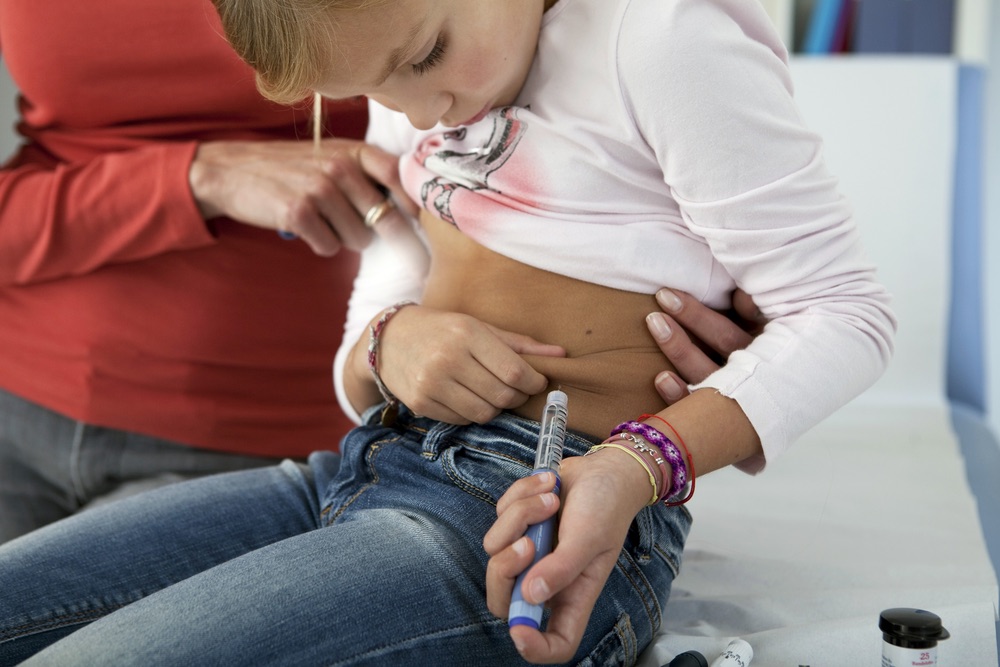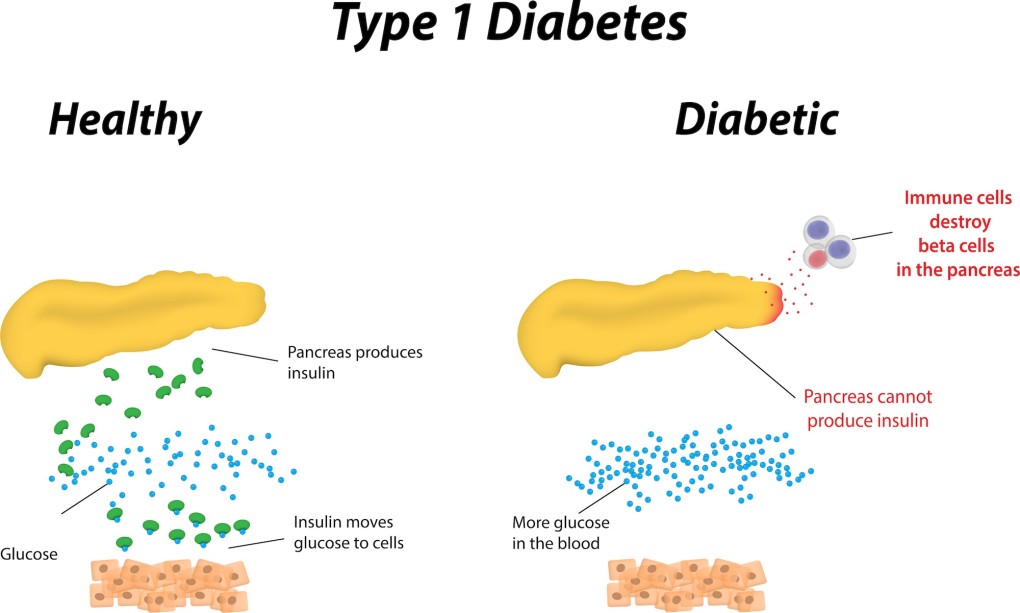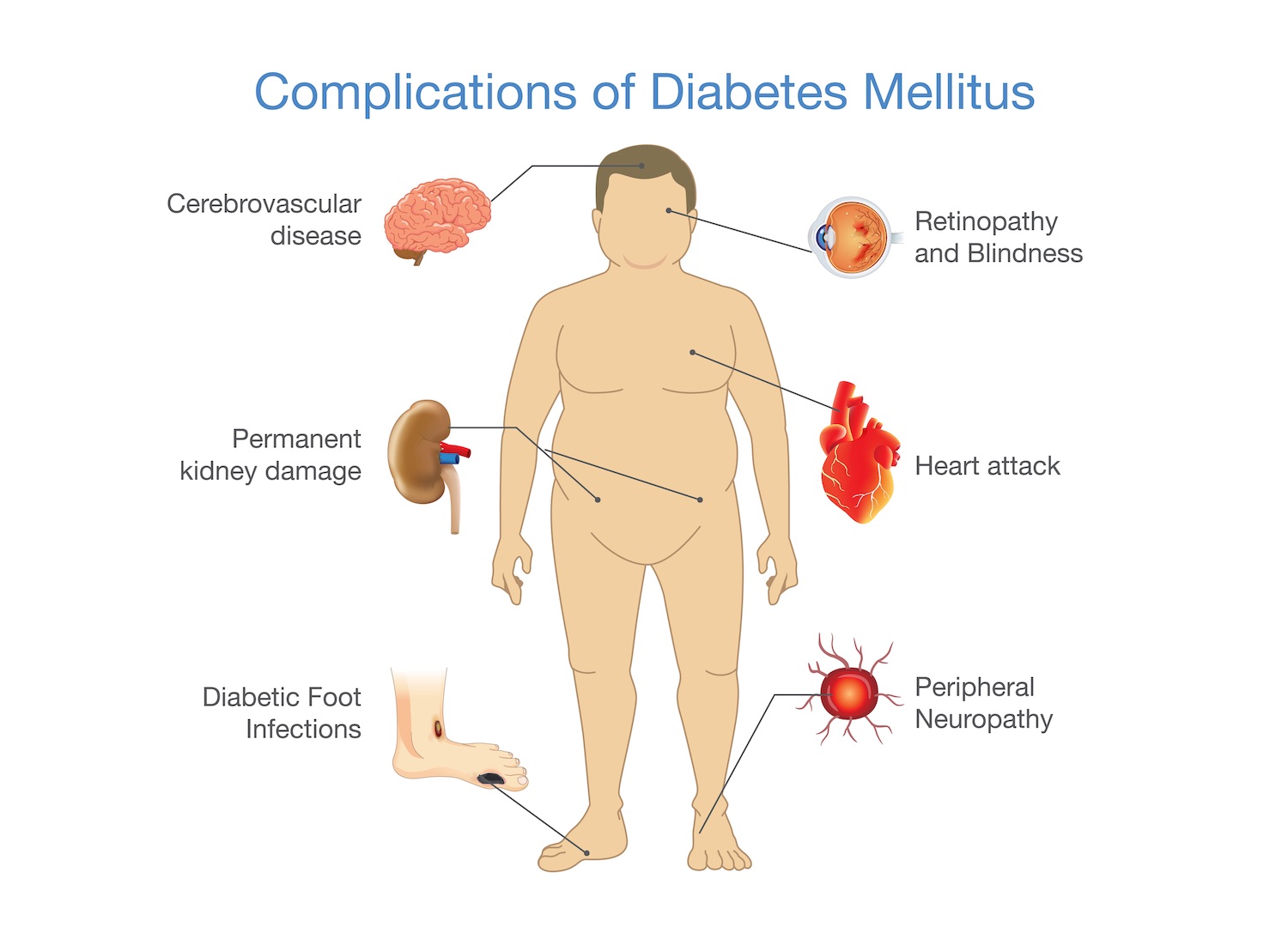- Home
- Dr Sultan Linjawi
Type 1 Diabetes
Type 2 Diabetes
Prediabetes
Gestational Diabetes
- Diabetes Information
- Testimonials
What is type 1 diabetes mellitus?

What is Type 1 Diabetes?
Type 1 diabetes explained simply
Type 1 diabetes is elevated blood sugars due to an absence or deficiency of insulin.
In diabetes, an increase in blood glucose levels occur when glucose can’t get into your fat and muscle cells where it is needed. In order for a cell in your body to gain access to glucose, it needs a small molecule called insulin. This ‘key’ unlocks the door into the cell. People with type 1 diabetes no longer produce insulin for a number of reasons.
Type 1 diabetes explained in more detail
Type 1 diabetes occurs when the pancreas, or more specifically specialised cells within the pancreas called beta cells, fail to produce insulin. Most people with type 1 diabetes develop the condition when the immune system attacks and destroys the beta cells. This is why type 1 diabetes is referred to as an autoimmune disease. Why this occurs is the source of much scientific investigation but put simply it is likely that the immune system is confused and recognises beta cells as being a foreign object (such as a virus) and wages a war against them. The fall in insulin production can either be rapid or slow. People with type 1 can therefore either develop symptoms rapidly over a few weeks or months or more slowly over a few years.
| Type 1 Diabetes Content |
|---|
| Type 1 Program |
| Overview |
| Risk Factors |
| Symptoms |
| Diagnosis |
| Complications |
| Treatment |
| Diet |
| Monitoring |
| Tools |
| Mental Health |
| Prevention |
Type 1 diabetes can even occur in someone who has had their pancreas removed. In this instance a person can develop type 1 immediately after the operation. This is however an unusual cause.

Latent autoimmune diabetes in adults (LADA)
Latent autoimmune diabetes in adults, or LADA, is a form of type 1 diabetes occurring in adulthood. Latent means that it comes on quite slowly, so the signs and symptoms of LADA has a slower course of onset compared to type 1 diagnosed in children, sometimes developing over a period of years. Because these symptoms develop slowly, LADA can be sometimes be incorrectly diagnosed as type 2 diabetes in adults.
Some of the characteristics of LADA include:
- Age of onset is 30 years and older
- Healthy weight with BMI is less than 25kg/m2
- Personal or family history of autoimmune disease
- Gradual onset
Who is at risk of type 1 diabetes?
The simple answer: anyone. Although it is more likely if someone in your family has type 1 or perhaps another autoimmune disease like coeliac disease, Addison's disease, pernicious anaemia or autoimmune thyroid disease. It can occur at any age but typically doesn’t develop in the first year of life. Even though it is often associated with children, half the people who develop type 1 are over the age of 30.
What are the symptoms of type 1 diabetes?
The most common symptoms are thirst and excessive trips to the toilet to pass urine. This occurs as high blood glucose passes into the urine and with the glucose, goes water. If the blood glucose levels are very elevated, then only a small amount is able to get into the muscle and fat cells. This leads to profound weight loss and a rapid decline in muscle mass. In the early part of the illness, these symptoms can be mild and difficult to detect.
You can read a full description of the symptoms of type 1 diabetes to learn more.
Type 1 diabetes and diabetic ketoacidosis
Diabetic ketoacidosis (DKA) is a condition that occurs due to a build-up of poisonous chemicals, called ketones, in the bloodstream. DKA occurs in approximately 30% of children who present with type 1 diabetes (Diabetic Ketoacidosis in Infants, Children, and Adolescents). This causes the blood to become acidic, and the combination of acids and dehydration can lead to comas and potentially death.
DKA is a medical emergency and requires immediate medical treatment. Ketones can often be smelt on the breath and has a distinctive ‘nail polish’ smell. Low levels ketones are often normally present in prolonged starvation with or without diabetes.
In a person who has type 1 diabetes, the body isn’t able to use glucose for energy. Instead, stored fat in the body is used as a source of energy. It’s the breakdown of these fatty acids that results in the build-up of ketones, which can also appear in your urine.
Some symptoms of DKA include:
- Moderate to heavy ketones in the urine
- Rapid breathing
- Flushed cheeks
- Abdominal pain
- Sweet acetone (like nail polish remover) smell on the breath
- Vomiting
- Dehydration
How is type 1 diabetes diagnosed?
When diagnosing type 1 diabetes, a number of tests are used including fasting plasma glucose, random blood glucose, oral glucose tolerance test, and Hb A1c. When testing for diabetes, the first step is to confirm that a person has diabetes and the next step is to differentiate type 1 diabetes mellitus from any other form of diabetes.
Tests diagnosing Type 1 diabetes mellitus include:
- fasting plasma glucose
- random blood glucose
- oral glucose tolerance test
- HbA1c test
Fasting plasma glucose
This test requires a person to fast for over eight hours followed by a blood test. A fasting plasma glucose of greater than 7 mmol/L or 126 mg/dL on more than one occasion can indicate diabetes.
Random blood glucose
A random blood glucose test is taken at any point… it’s random! A reading of 11.0mmol/L or 200mg/dL or more can indicate classic symptoms of hyperglycaemia (high blood glucose levels).
Oral glucose tolerance test
An oral glucose tolerance test (OGTT) involves consuming a sugary glucose syrup followed by a blood test one hour later and another two hours later. A plasma glucose reading of 11.0mmol/L or 200mg/dL or more at the two-hour blood test can indicate diabetes. Most children and adolescents display symptoms of type 1 diabetes, with blood glucose levels well over 11.0mmol/L (200mg/dL), so an OGTT isn’t necessary to diagnose type 1 diabetes.
Haemoglobin A1c (Hb A1c) test
The Hb A1c test looks at the amount of glucose that has bound to a particular type of haemoglobin, the oxygen carrying molecule in our blood. A persons Hb A1c can be a good indicated of average blood glucose control, as it shows the average blood glucose levels over a 2-3 month period. A reading of 6.5% or more can indicate diabetes. However, measured Hb A1c may not be truly reflective of blood glucose control in some people. To learn more about conditions that can contribute to a falsely elevated or lowered Hb A1c reading, visit the Hb A1c test to diagnose diabetes article to learn more.
Complications of untreated type 1 diabetes
Complications in type 1 diabetes are all related to poor blood glucose control. Poor control of blood glucose levels over a number of years can affect the blood vessels in the body, which can result in problems with the small blood vessels (known as microvascular complications) or the large blood vessels (known as macrovascular complications). The effects on the blood vessels from ongoing uncontrolled blood glucose levels, are a major source of morbidity and mortality for people with diabetes (Microvascular and Macrovascular Complications of Diabetes).

Microvascular complications – problems with small blood vessels
Like macrovascular disease, ongoing high blood glucose levels are an important risk factor for the development of microvascular disease in patients with type 2 diabetes. Microvascular complications include:
- Retinopathy – Disease of the eye which can lead to blindness
- Neuropathy – Disease of the nerves which can lead to foot ulcers requiring amputation
- Nephropathy – Disease of the kidneys which can lead to kidney failure and the need for dialysis
Diabetic retinopathy is the most common microvascular complication of diabetes. In the U.K. Prospective Diabetes Study (UKPDS) it was found that most patients with type 1 diabetes, began to develop evidence of retinopathy within 20 years of diagnosis (Clinical Factors Associated With Resistance to Microvascular Complications in Diabetic Patients of Extreme Disease Duration).
Macrovascular complications - problems with large blood vessels
Macrovascular disease affects the larger blood vessels in our body that supply blood to the heart, brain, and legs. Macrovascular complications include:
- Coronary artery disease which can lead to a heart attack
- Cerebrovascular disease which can lead to a stroke
- Peripheral artery disease which can lead to pain deep in the leg muscles (calves, thigh, or buttocks) during activity as well as amputations.
Diabetes increases the risk of that a person will develop cardiovascular disease compared to someone who does not have diabetes. In fact, cardiovascular disease is the primary cause of death in people with type 1 diabetes (The effect of intensive diabetes treatment on resting heart rate in type 1 diabetes: the Diabetes Control and Complications Trial/Epidemiology of Diabetes Interventions and Complications study).
To learn how to regain control of your blood glucose, you can join the 12-week personalised type 1 diabetes program. When you sign up, the first week is completely free!
How is type 1 diabetes treated?
In type 1 diabetes, treatment involves two key factors:
- Checking blood glucose levels regularly to make sure they aren’t too low or too high, and
- Using insulin (through a pen or pump) to help keep blood glucose levels in a safe range
Insulin is the main treatment for people with type 1 diabetes. The goal of insulin therapy is to replace insulin that can’t be produced by the pancreas to achieve normal glucose. Since insulin is a crucial hormone that allows glucose in the blood stream to get into the muscle and fat cells, replacing insulin is necessary for people with type 1 diabetes.
There are many different types of insulin and can be classified by the onset and duration of action. These include:
- rapid acting insulin
- intermediate acting insulin
- long acting insulin
Intensive insulin therapy can be delivered by either multiple daily injections (MDI) or through continuous insulin infusion (pump).
In the Diabetes Control and Complications Trial (DCCT), it was found that intensive therapy aimed at lower levels of blood glucose, resulted in decreased rates of retinopathy, neuropathy, and nephropathy in people with type 1 diabetes (The Effect of Intensive Treatment of Diabetes on the Development and Progression of Long-Term Complications in Insulin-Dependent Diabetes Mellitus). The DCCT study also found that ongoing blood glucose control (for a period of 6.5 years) has the lasting benefit of reducing cardiovascular morbidity and mortality in people with type 1 diabetes.
Monitoring blood glucose levels in type 1 diabetes
Blood glucose levels can be monitored by self-monitoring or continuous glucose monitoring.
Self-monitoring of blood glucose levels
Self-monitoring is an integral part of type 1 diabetes therapy. It is necessary as it can indicate the amount of insulin that is required for correct dosing. Self-monitoring requires the use of a glucose meter.
Continuous glucose monitoring
Most continuous glucose monitoring devices transmit blood glucose levels every five minutes. They can even alert you if you’re experiencing a hypoglycaemic or hyperglycaemic event. Flash glucose monitoring is one type of continuous glucose monitoring.
What are the target blood glucose levels for type 1 diabetes?
Below are the target blood glucose levels for type 1 diabetes before meals and two hours after a meal.
Target blood glucose levels for Type 1 Diabetes Mellitus
| Target levels | mmol/L | mg/dL |
|---|---|---|
| Before meals | 4.0 - 8.0 mmol/L | 72 – 145 mg/dL |
| Two hours after starting meal | less than 10.0 mmo/L | less than 180 mg/dL |
Diet and exercise in type 1 diabetes
Diabetes education is essential to help someone better understand how diet and exercise can impact on type 1 diabetes. Carefully planning meal and activity times is essential, as eating raises blood glucose levels, while being active lowers it.
Nutrition
Carbohydrates play a crucial role in diabetes. Variations in carbohydrate intake can result in erratic blood glucose levels and hypoglycaemia. When first diagnosed with type 1 diabetes, it can take some time to get a handle on carbohydrates consistency. Some important aspects to consider when it comes to diet are:
- Estimating the amount of carbohydrate in food
- Carbohydrate counting
- Matching insulin to carbohydrate
- When to check blood glucose levels
Exercise
Regular physical activity and exercise is a significant component of diabetes management. Exercise has a number of benefits for all people and not just people with diabetes! The benefits of exercise include:
- Improved blood glucose control
- Weight control
- Reduction in the comorbidities hypertension, dyslipidaemia, and cardiovascular disease
- Improved mood
- Improved quality of life
While exercise has not consistently been shown to improve control for patients with type 1 diabetes, it is important to learn how to adjust diet or insulin to accommodate exercise and avoid hypoglycaemia. Other important considerations for type 1 diabetes and exercise include:
- Effect of exercise on blood glucose levels
- Late hypoglycaemia
- Type, intensity, and duration of exercise
- When to check blood glucose levels
- Types of snacks to have on hand to avoid hypoglycaemia
What should I do next?
If you experience any symptoms of type 1 diabetes or you have risk factors for developing type 1 diabetes, it is important to get tested for as soon as possible. Some people are at higher risk and need regular testing.
By diagnosing and treating the type 1 diabetes early, it means you can decrease the risk of developing or delay any further health complications of type 1 diabetes, for example nerve damage, blindness, and heart disease. It is important to know that diagnosing type 1 diabetes should not rely solely on using a Hb A1c test.
Once you learn what your type 1 diagnosis is, or if you already have type 1 diabetes, the next most important step is to become educated. You can join the 12-week Type 1 Diabetes Program to help you learn how best to manage the condition. For example, you can learn how best to monitor blood glucose levels in type 1 diabetes. The program is personalised and tailored, giving you more of the content that you want. The program also helps you to stay motivated and teaches you what changes you need to make. The first week is free and full of helpful and crucial information.
DO YOU WANT TO GET YOUR DIABETES UNDER THE BEST CONTROL?
Click the program that best describes your situation.





